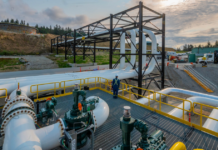Wind power generation dwindled to a near standstill across Alberta, Manitoba, Saskatchewan and even deep into the central United States on Wednesday morning.
According to the outlet Pipeline Online, major wind farms ranging across Alberta to Saskatchewan and down south to New Mexico and Texas fell to near-zero levels.
Data from the Southwest Power Poll (SPP) which reports power generation from grids in Canada and the US shows that for several hours, wind power reached a new low.
Wind Power generation for the SPP only contributed a meagre 1.1% to the total electricity output on Wednesday.
Meanwhile, 40.8% of the power generated in the region was a result of coal power, while natural gas took the lion’s share of 48.3%.
In Montana, North Dakota, South Dakota, Nebraska, Iowa, Missouri, Arkansas, Oklahoma, New Mexico and Texas wind farms only produced a total of 377 megawatts of electricity.
At the same time, demand from the SPP bulged to 34,302 megawatts.
Many wind farms across the SPP reported no wind with border-town stations in Crosby, North Dakota reporting only 2 miles per hour.
In Alberta, wind power only generated 123 megawatts of electricity, totalling 3.4% of the capacity of Alberta’s 36 wind farms. Out of all of the wind farms, a majority, or 26 stations, were producing zero electricity.
This is not the first time renewable energy sources like wind and solar energy have dwindled to near-zero levels.
In early April, Alberta energy grid data showed that both solar and wind farms fell to less than 1% of their total energy capacity one early Monday morning.
“At this point, the business case behind using solar and wind power is often very weak because these two sources of power are often unreliable – the sun doesn’t always shine and the wind doesn’t always blow,” said SecondStreet.org president Colin Craig at the time.
“If the Saskatchewan government’ is looking at solar and wind power to reduce emissions, then building more ties with Manitoba might make sense as the latter has access to relatively clean hydro power.”






















